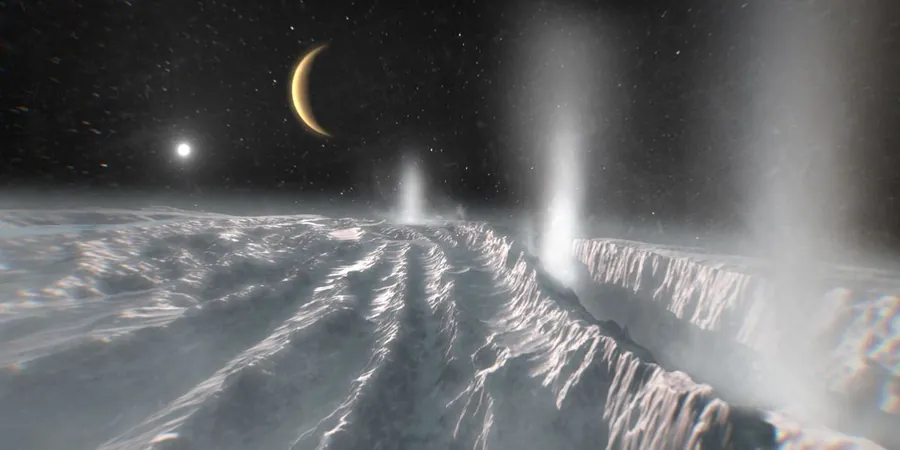
Are Icy Moons Hiding Life? Scientists Use Advanced Chemistry Models to Find Out!
2024-11-26
Author: Arjun
Scientists are diving deep into the realm of chemical modeling in a groundbreaking effort to uncover whether the icy moons scattered across our solar system could potentially harbor microbial life. This pursuit of extraterrestrial existence centers on understanding the ingredients and conditions that might exist on these frozen worlds.
In the search for "habitability," researchers are not just looking for idyllic, water-rich environments; they are defining the absolute conditions that could make life possible in the most inhospitable places imaginable. One of the leading voices in this field is Charity Phillips-Lander, a senior research scientist at the Southwest Research Institute (SwRI). Her research focuses on the ways in which organic compounds can survive in harsh, ice-covered environments, such as Europa and Enceladus.
Phillips-Lander points out a significant shortfall in existing geochemical modeling tools; many do not take into account the right conditions for organic molecules—critical components of life—within these icy seas. “Most models fail to consider organics under the conditions expected on ocean worlds, limiting our understanding of their habitability,” she explained.
Collaborating with fellow scientist Florent Bocher, Phillips-Lander has taken the initiative to design a new modeling software that simulates the formation of what they term "organic-doped ice pores." These are intricate ice structures that can trap or interact with organic compounds through tiny pores. These processes mirror phenomena observed on Earth in polar regions and glaciers, where ice undergoes cycles of freezing, thawing, and sublimation, creating similar porous formations.
To evaluate how these iced structures might behave on other worlds, the research team creates organics-doped ice under controlled laboratory conditions to replicate what might occur on moons like Enceladus or Europa. They explore the impacts of varying temperatures, pressures, and cosmic radiation, generating crucial data about how these extremes could shape the life-sustaining or hindering conditions.
The knowledge from these laboratory investigations, combined with accurate computational models, offers insights into how ice interacts in environments far beyond our planet. As Bocher stated, "With improvements, this tool will provide invaluable information about ocean worlds. Knowing the chemical composition is one thing, but understanding the compounds present and their specific states is paramount."
Currently, the researchers are honing their model to reflect the specific environments of distant celestial bodies accurately. Enceladus, the moon of Saturn, is under particular scrutiny, drawing scientists closer to the age-old question: is there life lurking beneath the icy crust of these distant moons? As our understanding of these icy worlds deepens, so does the tantalizing possibility that we are not alone in the universe.


 Brasil (PT)
Brasil (PT)
 Canada (EN)
Canada (EN)
 Chile (ES)
Chile (ES)
 España (ES)
España (ES)
 France (FR)
France (FR)
 Hong Kong (EN)
Hong Kong (EN)
 Italia (IT)
Italia (IT)
 日本 (JA)
日本 (JA)
 Magyarország (HU)
Magyarország (HU)
 Norge (NO)
Norge (NO)
 Polska (PL)
Polska (PL)
 Schweiz (DE)
Schweiz (DE)
 Singapore (EN)
Singapore (EN)
 Sverige (SV)
Sverige (SV)
 Suomi (FI)
Suomi (FI)
 Türkiye (TR)
Türkiye (TR)